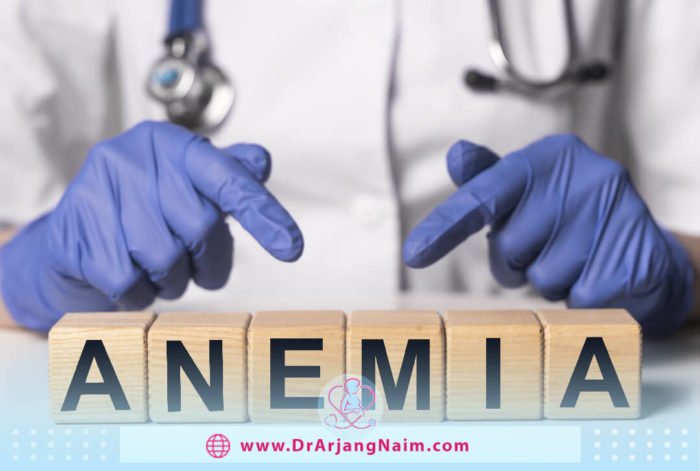Iron-Deficiency anemia is a common type of anemia, a condition in which the blood lacks enough healthy red blood cells. Red blood cells carry oxygen to the body’s tissues.
Without enough iron, the body cannot produce enough of the substance in red blood cells to carry oxygen. Iron deficiency anemia can usually be treated with iron supplementation. Sometimes additional tests or treatments are necessary, especially if the doctor suspects that the person has internal bleeding.
While this condition may be common, many people do not know they have anemia. People may experience symptoms for years without knowing the cause. In women of childbearing age, one of the most common causes of iron deficiency anemia is the loss of iron in the blood due to menometrorrhagia or pregnancy. Improper diet or some intestinal diseases that affect how the body absorbs iron can also cause anemia.
What is iron?
Iron is an essential mineral involved in various body functions, including the transport of oxygen in the blood, and is also necessary for providing energy for daily life. Iron is excreted through sweating, intestinal cell loss, and blood loss. Some of the various roles of iron in the body are:
- Oxygen transport: red blood cells contain hemoglobin, a complex protein that carries oxygen from the lungs to the rest of the body. Hemoglobin is made up of some iron and makes up about two-thirds of the body’s iron.
- Myoglobin: A special protein that helps store oxygen in muscle cells. Myoglobin contains iron and is responsible for the red color of muscle.
- Enzymes: Many enzymes throughout the body contain iron, including enzymes involved in energy production. Enzymes are catalysts that drive many cellular functions.
- Immune system: The immune system needs enough iron to function properly.
An average person needs to absorb a small amount of iron per day to maintain their health—about 1 mg for adult men and 1.5 mg for menstruating women. But to achieve this goal, we must consume several times this amount. This is because our bodies absorb only a fraction of the iron in the foods we eat.
During pregnancy, the body needs more iron. Pregnant women need about twice as much iron as non-pregnant women. Not getting enough iron during pregnancy increases the risk of premature birth or low birth weight babies. Premature birth and low birth weight increase the risk of health and developmental problems in children at birth and childhood.
Types of iron
Two types of iron in the diet are:
- Haem iron: It is found in animal tissues such as beef, lamb, kangaroo, chicken, and fish. The body easily absorbs this form of iron.
- Non-haem iron: It is found in animal products and plant foods such as dried beans and lentils. Plant sources of non-haem iron include iron-fortified breakfast cereals, whole grains, and legumes.
Plant sources of iron include fortified beans, soy, nuts, vegetables, and whole grains. The absorption of iron from animal sources is up to 40%, and this number is about 2 to 20% for plant sources.
Symptoms
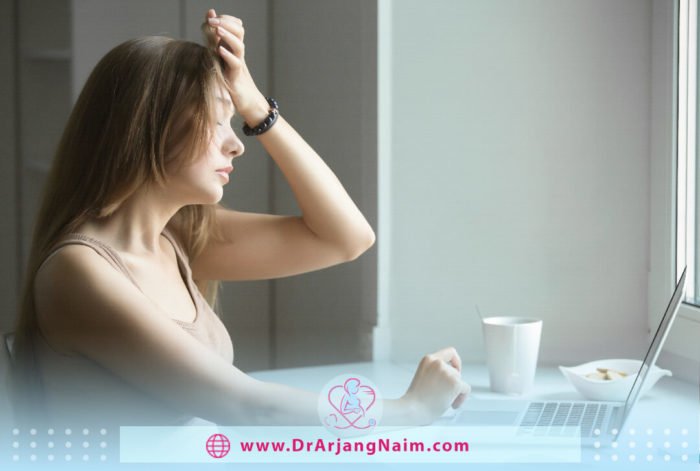
At first, iron deficiency anemia can be so mild that it goes unnoticed. But with anemia, the signs and symptoms get worse. Signs and symptoms may include:
- General fatigue
- Weakness
- Shortness of breath
- Dizziness
- A tingling or crawling feeling in the legs
- Tongue swelling or soreness
- Cold hands and feet
- Fast or irregular heartbeat
- Brittle nails
- Headaches
- Strange cravings to eat items with no nutritional value
- Pale skin
Causes
There are many reasons that a person might become deficient in iron.
Inadequate iron intake
Insufficient consumption of iron-containing foods for a long time can cause a deficiency in the body. Foods such as meat, eggs, and some green leafy vegetables are high in iron. Pregnant women and young children may need iron-rich foods in their diets because iron is essential for growth and development.
Pregnancy or blood loss due to menstruation
Heavy menstrual bleeding is one of the most common causes of iron deficiency anemia in women of childbearing age. Pregnancy also causes iron deficiency because the body needs more iron to provide enough oxygen for the baby.
Inability to absorb iron
Some disorders or surgeries that affect the intestines can also interfere with how the body absorbs iron. Even if a person gets enough iron in their diet, celiac disease or bowel surgery, such as gastric bypass, limits the body’s ability to absorb iron.
Internal bleeding
Some medical conditions can cause internal bleeding that results in iron deficiency anemia. Examples include stomach ulcers, polyps in the colon, and colon cancer. Regular use of some painkillers such as aspirin can also lead to stomach bleeding.
Endometriosis
Endometriosis occurs when the endometrial glands and the uterus lining grow outside the uterus. Women with endometriosis may have a lot of blood loss during menstruation.
Genetics
Some conditions, such as celiac disease, make it difficult to absorb iron is passed on through families. Some genetic disorders or mutations can add to this problem. This mutation causes the body to produce large amounts of hepcidin. Hepcidin is a hormone that can block iron absorption in the gut. Other genetic conditions may contribute to anemia by causing abnormal bleeding, such as von Willebrand disease and hemophilia.
Risk factors
Some people have a higher risk of developing iron-deficiency anemia.
Women
Women are more prone to anemia due to blood loss during menstruation.
Infants and children
Babies with low birth weight or born prematurely and who do not get enough iron from breast milk or formula are at higher risk for iron deficiency. Children need extra iron during growth spurts. If the child does not have a healthy and varied diet, they may be at risk for anemia.
Vegetarians
People who do not eat meat are at risk for iron-deficiency anemia if they do not eat other iron-rich foods.
Frequent blood donors
People who donate blood regularly may be at increased risk for iron deficiency anemia because donating blood can reduce iron stores.
Complications
Mild iron deficiency anemia usually has no side effects. However, if iron deficiency anemia is not treated, it can become severe and cause health problems.
Heart problems
Iron deficiency anemia can lead to a fast or irregular heartbeat. The heart must pump more blood to compensate for the lack of oxygen carried in the blood during anemia. This can lead to an enlarged heart or heart failure.
Problems during pregnancy
In pregnant women, severe iron deficiency anemia is associated with low birth weight infants and preterm delivery. But this condition can be prevented in pregnant women who take iron supplements as part of their prenatal care.
Growth problems
Severe iron deficiency can lead to anemia and delayed growth in infants and children. In addition, iron deficiency is associated with an increased risk of infections.
Prevention
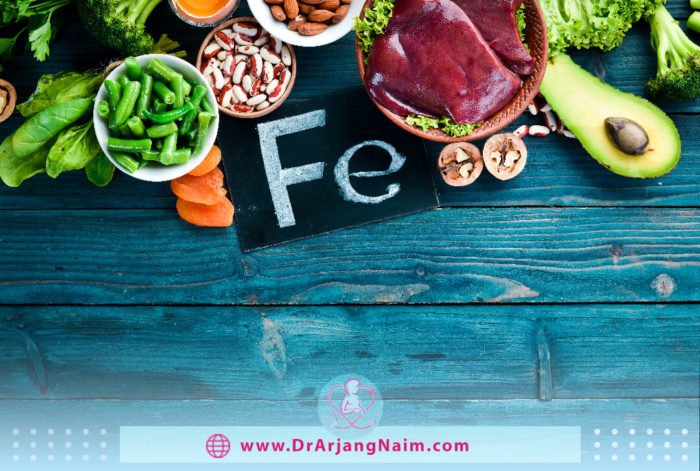
Eating iron-rich foods can help prevent iron deficiency.
Choose iron-rich foods
Iron-rich foods include:
- Dried fruit, such as raisins and apricots
- Iron-fortified cereals, bread, and pasta
- Seafood
- Beans
- Dark green leafy vegetables, such as spinach
- Red meat, pork, and poultry
- Peas
Consume foods containing vitamin C
Drinking citrus juice or eating other foods rich in vitamin C, along with eating high-iron foods, increases the body’s iron absorption. Vitamin C in citrus juices helps the body absorb dietary iron better.
Diagnose
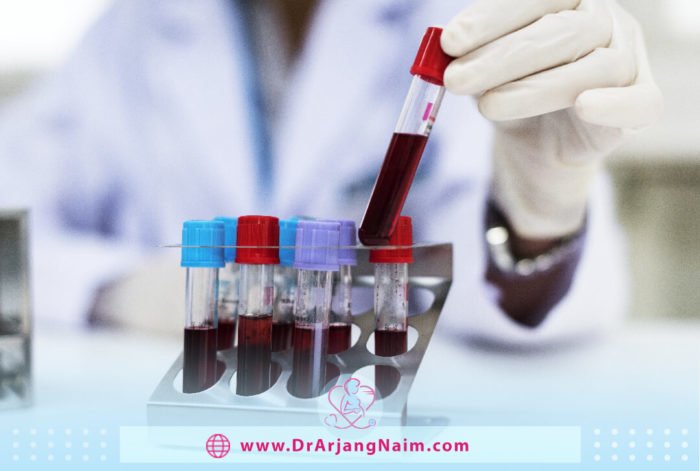
The doctor will diagnose anemia with a blood test.
Complete blood count test
A complete blood count (CBC) is usually the first test your doctor uses. The CBC measures the amount of cellular or cell-related components in the blood, including:
- Hemoglobin
- Hematocrit
- Platelets
- Red blood cells (RBCs)
- White blood cells (WBCs)
The complete blood count provides information about blood that can help diagnose iron-deficiency anemia. In iron deficiency anemia, hematocrit and hemoglobin levels are low, and red blood cells are usually smaller than normal.
Other tests
If the blood test shows iron deficiency anemia, the doctor may order more tests to find the underlying cause.
Endoscopy
Doctors often examine bleeding from a hiatal hernia, an ulcer, or the stomach with endoscopy. In this procedure, a thin, clear tube equipped with a video camera is passed from the throat to the stomach to identify the source of the bleeding.
Colonoscopy
The doctor uses a colonoscopy method to rule out other sources of bleeding in the lower intestine. Colonoscopy allows the doctor to look at all or part of the large intestine and rectum to check for internal bleeding.
Ultrasound
In women, doctors will usually recommend a pelvic ultrasound to look for the cause of excessive menstrual bleeding, such as uterine fibroids.
Treatment
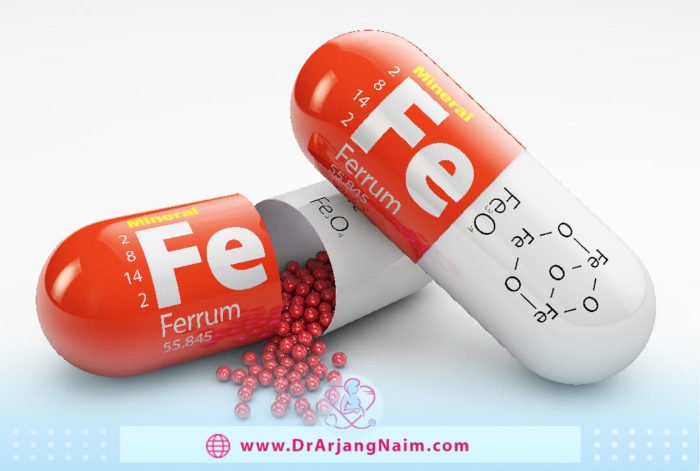
To treat iron deficiency, the doctor may recommend iron supplements. If necessary, the doctor will also treat the underlying cause of your iron deficiency.
Iron supplements
The doctor will recommend the appropriate dose of the supplement based on the patient’s condition. Iron absorption can be increased by using methods.
Take iron tablets on an empty stomach
The absorption of iron tablets on an empty stomach is greater. If taking iron tablets on an empty stomach causes digestive problems, it can be taken after a meal.
Don’t take iron with antacids
Antacids can interfere with iron absorption. Take an iron supplement two hours before or four hours after taking the antacid.
Take iron tablets with vitamin C
Taking iron tablets with vitamin C supplements or a glass of orange juice can increase its absorption. After starting an iron supplement may take months for the iron stores to replenish, but the symptoms gradually improve.
Treating the underlying cause of bleeding
If iron supplements do not increase blood iron levels, the anemia is likely due to other sources of bleeding or difficulty absorbing iron, which should be checked and treated by a doctor. Depending on the cause, treatment for iron deficiency anemia may include:
- Taking contraceptives to reduce menstrual bleeding
- Taking antibiotics and other medications to treat stomach ulcers
- Surgery to remove a bleeding polyp, tumor, or fibroid
- If the iron deficiency anemia is severe, intravenous iron injections or blood transfusions may be needed to help replace iron and hemoglobin.
The bottom line
Iron-Deficiency anemia occurs due to a lack of iron in the diet, or the body does not absorb iron. Despite the prevalence of this disease, most people who suffer from iron deficiency or mild anemia usually do not notice the symptoms until the disease has worsened. Knowing the signs of iron deficiency is very important and can help treat and prevent it in a timely manner.
Do not try to diagnose and treat iron deficiency anemia yourself because you may have a lot of iron in your blood that can cause other diseases such as constipation and even liver damage.
Additional questions
- What foods should you avoid if you have anemia?
- Tea and coffee
- Milk and some dairy products
- Foods that contain oxalic acids, such as chocolate
- Foods that contain phytates or phytic acids, such as whole-grain wheat products and brown rice
- Foods that contain tannins, such as corn, grapes, and sorghum
- What will happen if anemia is not treated?
Anemia can lead to serious complications if left untreated for long, including heart failure, severe weakness, and poor immunity.
- What is the fastest way to cure anemia?
If the person has iron deficiency anemia, taking oral iron or injecting iron intravenously with vitamin C is often the fastest way to increase iron levels.
- How much iron does a six-month-old need?
The recommended dose for infants under six months is 0.27 mg per day. The recommended dose is 11 mg per day for infants six months and older.
- Is iron deficiency common during the period?
If the woman has heavy bleeding continuously during menstruation, she may suffer from anemia. Iron levels can drop due to blood loss during menstruation, causing the woman to feel weak and tired.
References:
https://www.healthline.com/health/iron-deficiency-anemia#_noHeaderPrefixedContent
https://diagnosisbook.com/blood-and-lymphatic-disease/iron-deficiency-anemia
https://www.webmd.com/a-to-z-guides/iron-deficiency-anemia
https://www.betterhealth.vic.gov.au/health/conditionsandtreatments/iron
https://www.womenshealth.gov/a-z-topics/iron-deficiency-anemia


